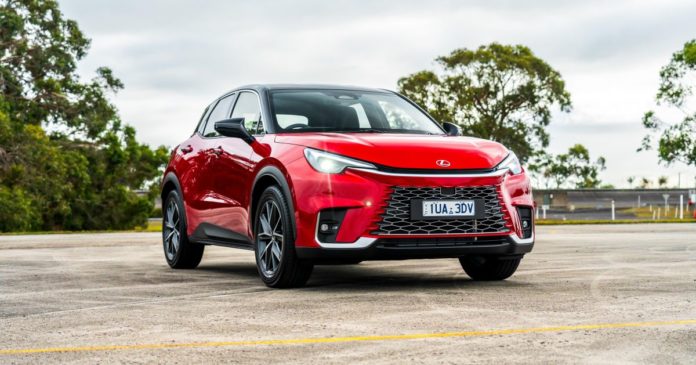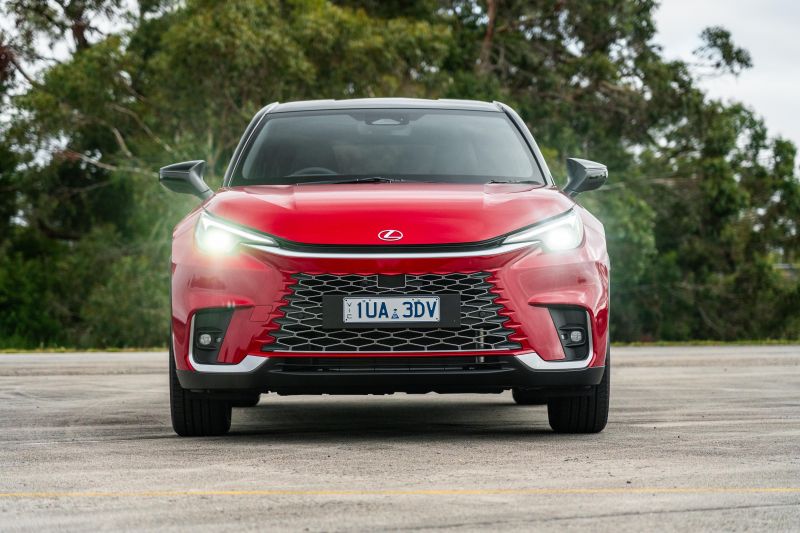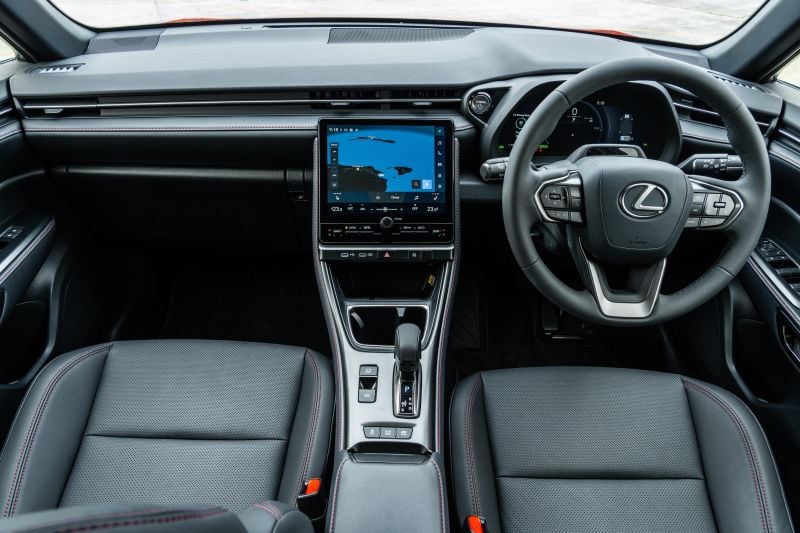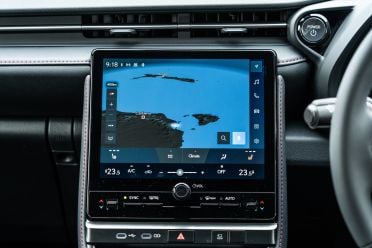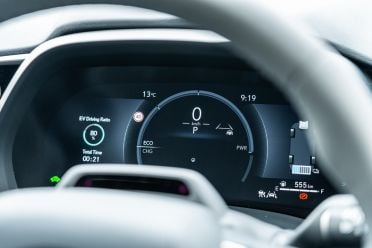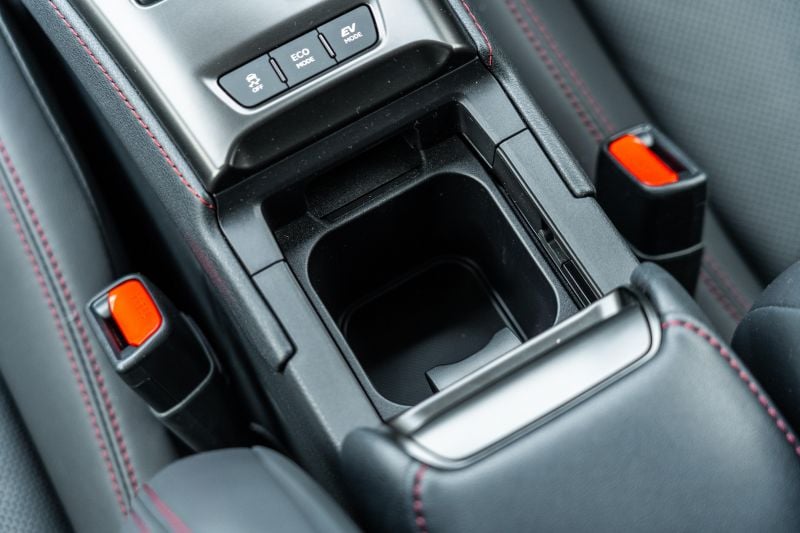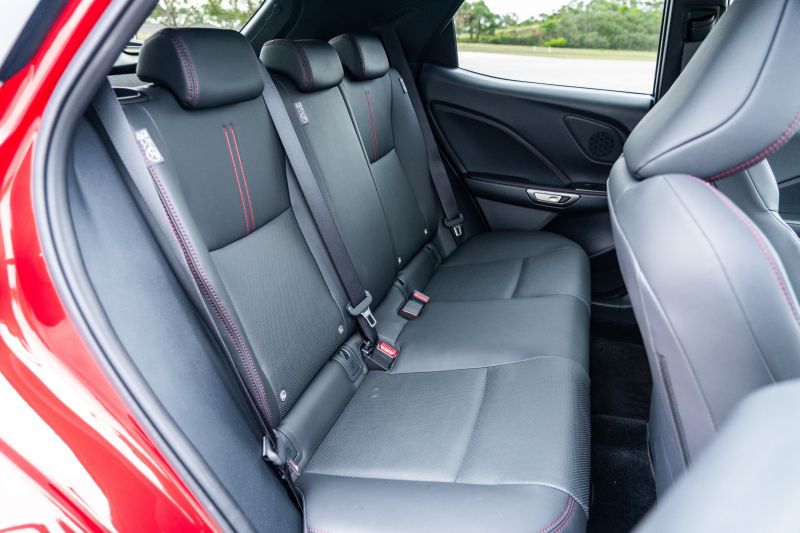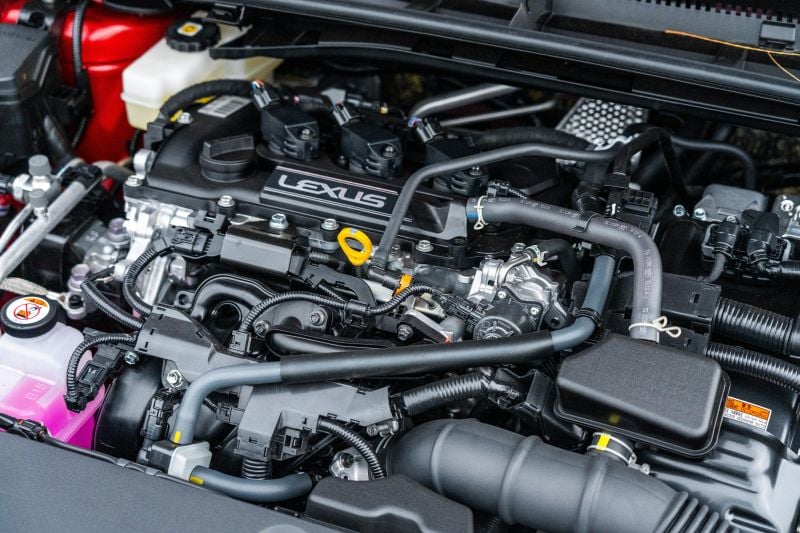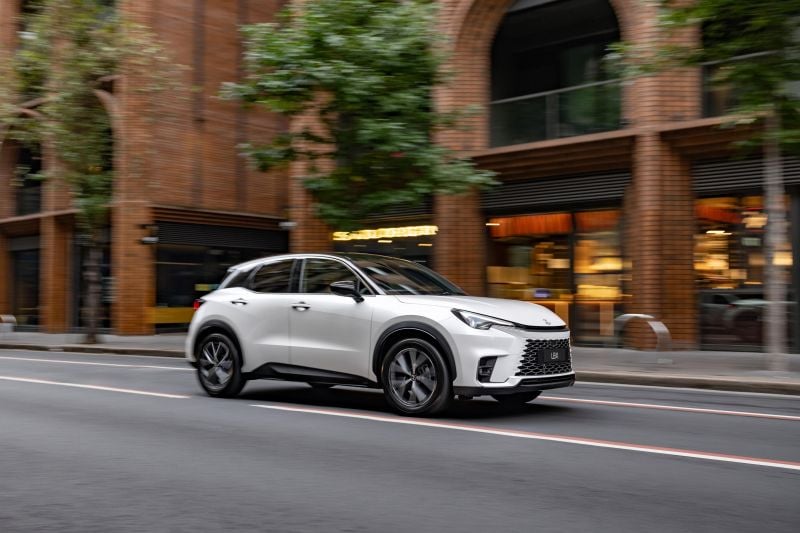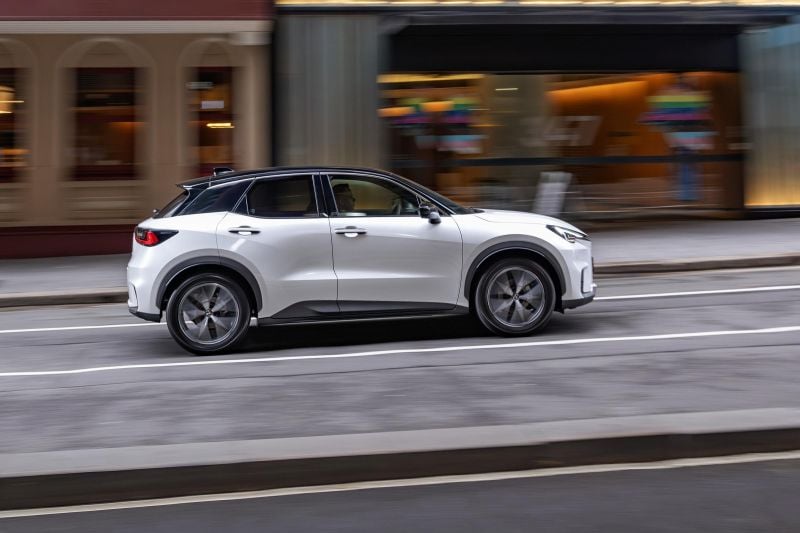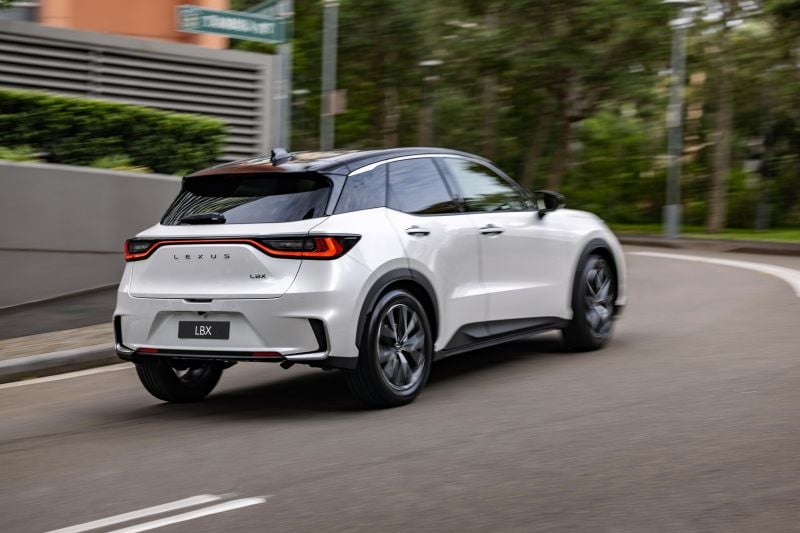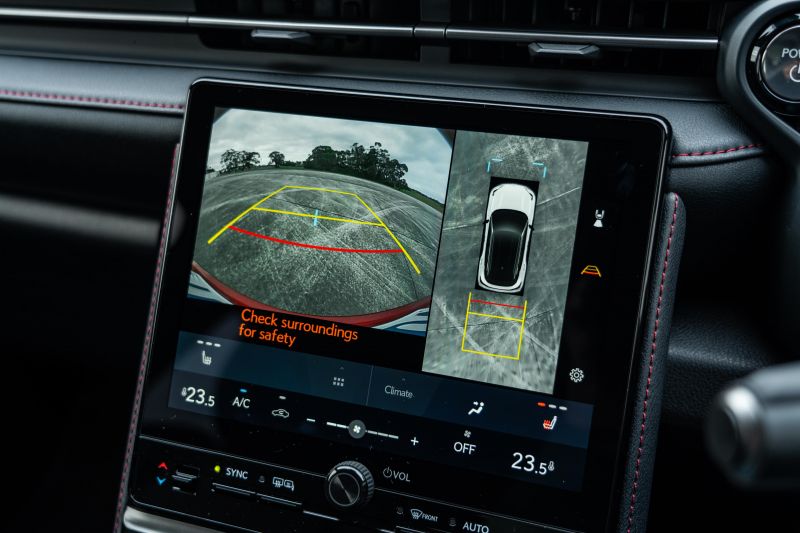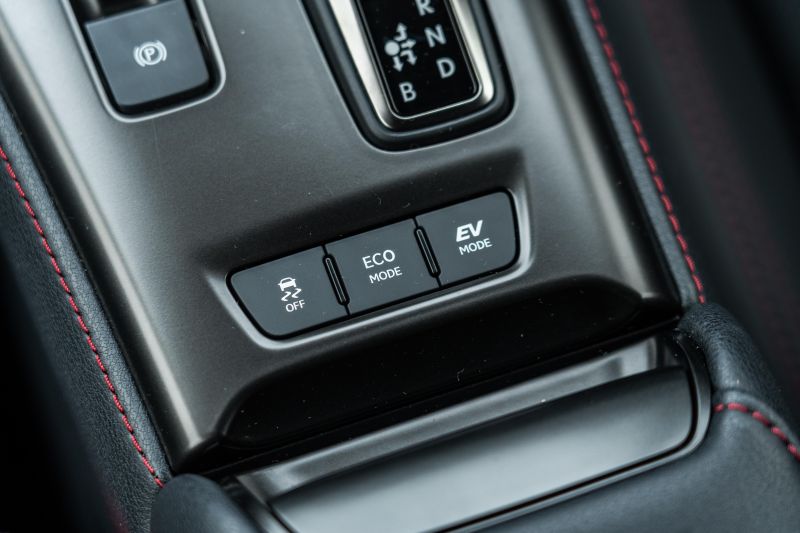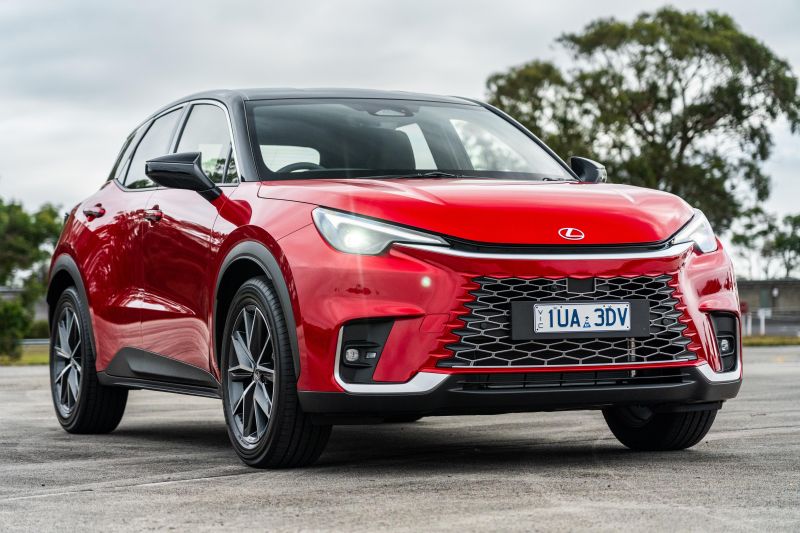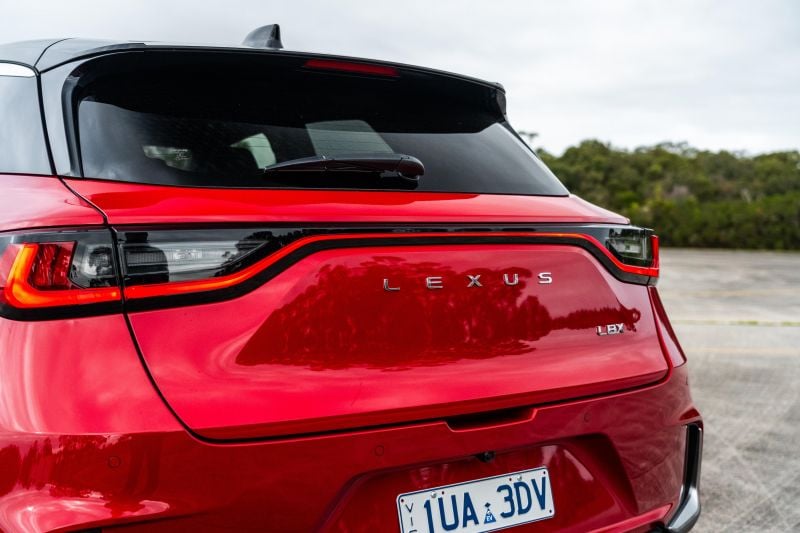You’re looking at the littlest Lexus that ever did live.
It’s barely bigger than a Volkswagen Polo on the outside, and sits below the already compact UX SUV in the growing Lexus range. Under the skin, it shares its platform and hybrid powertrains with the Toyota Yaris Cross.
This is new ground for Lexus; something it’s acknowledged with the name Lexus Breakthrough Crossover, or LBX – only the second three-letter badge in its history. The first was applied to the screaming V10 LFA supercar.
Forging a new path is never easy. The last time Lexus tried to take on the world of city cars, it served up the Toyota Prius-based CT hatchback. It never hit great heights on the sales charts, and was culled Down Under in 2021.
The LBX has a much better chance of succeeding.
How does the Lexus LBX compare?
View a detailed breakdown of the Lexus LBX against similarly sized vehicles.

Lexus
LBX
How much does the Lexus LBX cost?
The LBX is the cheapest member of the Lexus range, with a starting price below $50,000 before on-road costs.
| Model Variant | $RRP |
|---|---|
| Lexus LBX Luxury 2WD | $47,500 |
| Lexus LBX Sports Luxury 2WD | $52,990 |
| Lexus LBX Sports Luxury AWD | $56,990 |
To see how the Lexus LBX stacks up against the competition, use our comparison tool.
What is the Lexus LBX like on the inside?
Some small, entry-level luxury crossovers feel like cheap cars dressed up in a fancy frock. Credit to Lexus, the LBX is a more rounded car than that.
It’s properly plush behind the wheel, with lots of lovely materials. From the leather on the seats, to the firm clunk of the gear selector when you slot it into place, there’s nothing tinny or lightweight about the LBX.
It is… small, though. At a lanky six-seven I’m not representative of the average driver – but I am able to get reasonably comfortable in a Yaris Cross.
In the LBX, I was pressed up against the steering wheel with my legs awkwardly splayed around it; knee jammed into the side of the centre console.
This is not a car for tall drivers. But shorter drivers will be able to get comfortable in the soft, welcoming arms of the front seats, and the view out of the windscreen is just commanding enough to remind you this isn’t a hatch… without making it feel imposing or scary in tight places.
Lexus hasn’t scrimped on the technology here. The dashboard is dominated by a touchscreen running software lifted from the bigger NX and RX, with polished graphics and quick responses.
It immediately differentiates the car from the Yaris Cross, and comes fully featured even in the base model. That means satellite navigation, wireless smartphone mirroring, and DAB+ digital radio to join standard Bluetooth, AM, and FM.
The digital driver display has been lifted from the latest Toyota products, but it’s dressed up in a fancier suit.
It’s not the simplest thing in the world to configure, but once set up there’s enough information and configurability there to make tech nerds happy.
Storage up front is solid. There’s a cupholder at the base of the dash, along with a neat slot for your smartphone near the USB-C ports. There’s also a slot at the base of the dashboard that’s perfect for a phone or wallet.
The glovebox isn’t massive, and the elbow-baiting placement of the second central cupholder is a loss in a car aimed at urbanites who love their coffee.
At least there are decent door bins, and the open space beneath the transmission tunnel is perfect for hiding a handbag.
Rear seat space is very limited. The door opening itself is small, so loading kids (or older, creakier adults loading themselves) is more of a challenge than in a similarly-priced Toyota RAV4.
Once there, legroom is limited and headroom is impeded by the stylish roofline. It’s a space best reserved for kids, or adults on very short trips – evidenced by the lack of air vents and fixed central seatback, although you do get USB-C ports.
ISOFIX points feature on the outboard rear seats, and there’s a trio of top tethers for child seats. Be aware though, a rear-facing seat is going to necessitate having the front seats slid quite a long way forward.
If you are planning to use this car as a family car regularly, it’s worth looking at similarly priced mid-sized SUV like a RAV4 or, if you want a luxury-ish Japanese feeling, a Mazda CX-5. Although they’re not as special inside, your money get you more room.
The powered boot lid is a nice touch, but the loading lip is significant. That means if you’re lifting heavy items in, you can’t just slide them along the boot floor.
| Dimensions | Lexus LBX |
|---|---|
| Length | 4190mm |
| Width | 1825mm |
| Height | 1560mm |
| Wheelbase | 2580mm |
| Boot capacity | 402L (rear seats in place) 994L (rear seats folded) |
| Kerb weight | 1330kg |
To see how the Lexus LBX stacks up against the competition, use our comparison tool.
What’s under the bonnet?
The LBX is hybrid-only, and shares its powertrains with the Toyota Yaris Cross.
| Technical Specs | Lexus LBX 2WD |
|---|---|
| Engine | 1.5L 3cyl hybrid |
| Engine outputs | 67kW + 120Nm |
| Electric motor outputs | 69kW + 185Nm |
| Combined hybrid power | 100kW |
| Transmission | e-CVT |
| Driven wheels | Front-wheel drive |
| Fuel economy (claimed) | 3.8L/100km |
| Fuel economy (as tested) | 4.5L/100km |
| Fuel tank size | 36 litres |
| Fuel type | 91 RON |
To see how the Lexus LBX stacks up against the competition, use our comparison tool.
How does the Lexus LBX drive?
The hybrid system in the LBX fires with a… beep. There’s no engine noise when you turn the car on, with electric motor generally on hand to get you out of your driveway and away from the neighbours before the three-cylinder engine kicks into gear.
On light throttle, you’re able to cruise from standstill to around 20km/h or 30km/h without the petrol engine firing. Unlike an EV or PHEV though, there’s no meaningful battery-only range.
The engine is so impressively smooth and quiet it can be hard to know it’s actually turned on at times, though. That’s not something you could say about the related Toyota Yaris Cross, where the inherently unbalanced three-cylinder engine really makes its presence felt.
It’s clear a lot of effort has been put into making the LBX behave like a Lexus, and it really has paid off. Combined with smooth, light steering and a really excellent ride over pockmarked city streets, this is just a nice way to get around the city.
It slots into the sort of tight carparks that make an NX or RX nervous without breaking a sweat, and the inclusion of a proper surround-view camera and sensors on every corner means there really are no excuses to ding a bumper or scrape a wheel.
That it’s well featured should come as no surprise, given this is a Lexus. But it’s not often a small car comes with a full suite of driver assists and parking assists as standard.
There’s even some fun to be had here. Lexus is working on hotter version of the LBX which shares its running gear with the GR Yaris, and the way even this base model can be flung around corners points to the fast version being a bit of a riot.
With a kerb weight of around 1350kg, there’s not too much heft to push around here. Although it isn’t a GR Yaris in a straight line, there’s enough punch here to squirt away from the traffic lights and sneak ahead of the car next to you.
It’s nicely settled at higher speeds, too. There’s no getting away from the size – or lack thereof – here, but it’s nicely planted at 100km/h on the highway, and doesn’t get shoved around by the wash from big trucks.
You also don’t get the volume of road noise you’d expect of a small, light SUV at speed. There’s some whistle from the mirrors, and some static noise from the tyres at 100km/h, but once again the Lexus team has worked its magic on the more humble bones underpinning the car.
What that team hasn’t been able to hide is the fact the three-cylinder hybrid powertrain is a bit under-gunned when you want to get somewhere in a hurry. Put your foot down at highway speeds and it needs to work hard, flaring the revs and eliciting more noise than is ideal from the three-pot engine.
Overtakes require a run-up, and the fuel economy advantage of the hybrid powertrain isn’t a pronounced when you’re doing highway work.
We’d wager most owners probably have an RX or NX in the garage for trips to the weekend home anyway, but if you are planning to spend long stints behind the wheel we’d once again recommend checking out a mid-sized SUV with less luxury, but a more grown-up feel.
Lexus does need to do some smoothing on its driver assists. The adaptive cruise is smooth and smart, and the lane-centring system does a good job keeping the car between the white lines on longer stints. But the driver monitoring is hyperactive, and requires too many button presses to turn off.
What do you get?
There are two trim levels offered locally – the entry-level Luxury can only be had with front-wheel drive, whereas the flagship Sports Luxury is available with either front- or all-wheel drive.
LBX Luxury highlights:
- 18-inch alloy wheels
- Tyre repair kit
- Automatic LED headlights
- Adaptive high-beam
- LED tail lights
- LED front fog lights and cornering lights
- Rain-sensing wipers
- Auto-dimming driver’s side mirror
- Rear privacy glass
- Power tailgate
- 12.3-inch digital instrument cluster
- 9.8-inch touchscreen infotainment system
- Wireless Apple CarPlay and Android Auto
- Connected satellite navigation
- ‘Hey Lexus’ natural voice recognition
- DAB+ digital radio
- 6-speaker Panasonic sound system
- 5 x USB-C ports
- Wireless charger
- Dual-zone climate control
- Proximity entry and push-button start
- Single-colour ambient interior lighting
- Auto-dimming rear-view mirror
- Black NuLuxe leatherette upholstery with red highlights
- Heated front seats
- 8-way power driver’s seat with two-way lumbar and memory
Is the Lexus LBX safe?
The Lexus LBX hasn’t been crash-tested by ANCAP or Euro NCAP at this stage.
The following safety equipment is standard across the range:
- 8 airbags
- Autonomous emergency braking (AEB)
- Day/night pedestrian detection
- Day/night cyclist detection
- Day motorcycle detection
- Junction assist
- Rear AEB
- Blind-spot monitoring
- Rear cross-traffic alert
- Safe exit assist
- Driver monitor camera
- Adaptive cruise control
- Traffic sign recognition
- Front and rear parking sensors
- Surround-view camera
- Tyre pressure monitoring
The LBX Sports Luxury adds a semi-autonomous parking assist.
All Lexus LBX variants also receive a three-year complimentary subscription to Lexus Connected Services. It offers customers real-time vehicle information, remote functionality, and emergency calling.
How much does the Lexus LBX cost to run?
The Lexus LBX is covered by a five-year, unlimited-kilometre warranty.
| Aftersales Program | Lexus LBX |
|---|---|
| Warranty | 5 years, unlimited kilometres |
| Service intervals | 12 months or 15,000km |
| Capped price servicing | Five years |
| Annual capped price service cost | $595 |
A three-year complimentary Encore subscription is also provided at no extra cost. It includes roadside assistance, complimentary service loan car, Ampol fuel discounts, as well as exclusive lifestyle event offers.
CarExpert’s Take on the Lexus LBX
The little LBX feels like a proper Lexus, albeit one that’s been zapped by a shrink ray.
The amount of luxury that’s been packed into a platform shared with the Yaris Cross is genuinely impressive, even in the base model on test here, and there’s a meaningful improvement in refinement here.
It’s also efficient and inoffensive to drive, which is right on the money for the target market. There aren’t many nicer ways to dart around the city or squeeze into small parking spaces on sale in Australia today.
No matter which way you spin it though, you’re paying a lot of money for minimal metal.
The rear seats in the LBX make the more expensive UX look feel a limousine, and that’s not a compliment for either car, and bigger drivers will need to look elsewhere given the packaging up front.
Click on the images to view the full gallery
MORE: Buy a Lexus LBX
MORE: Everything Lexus LBX

